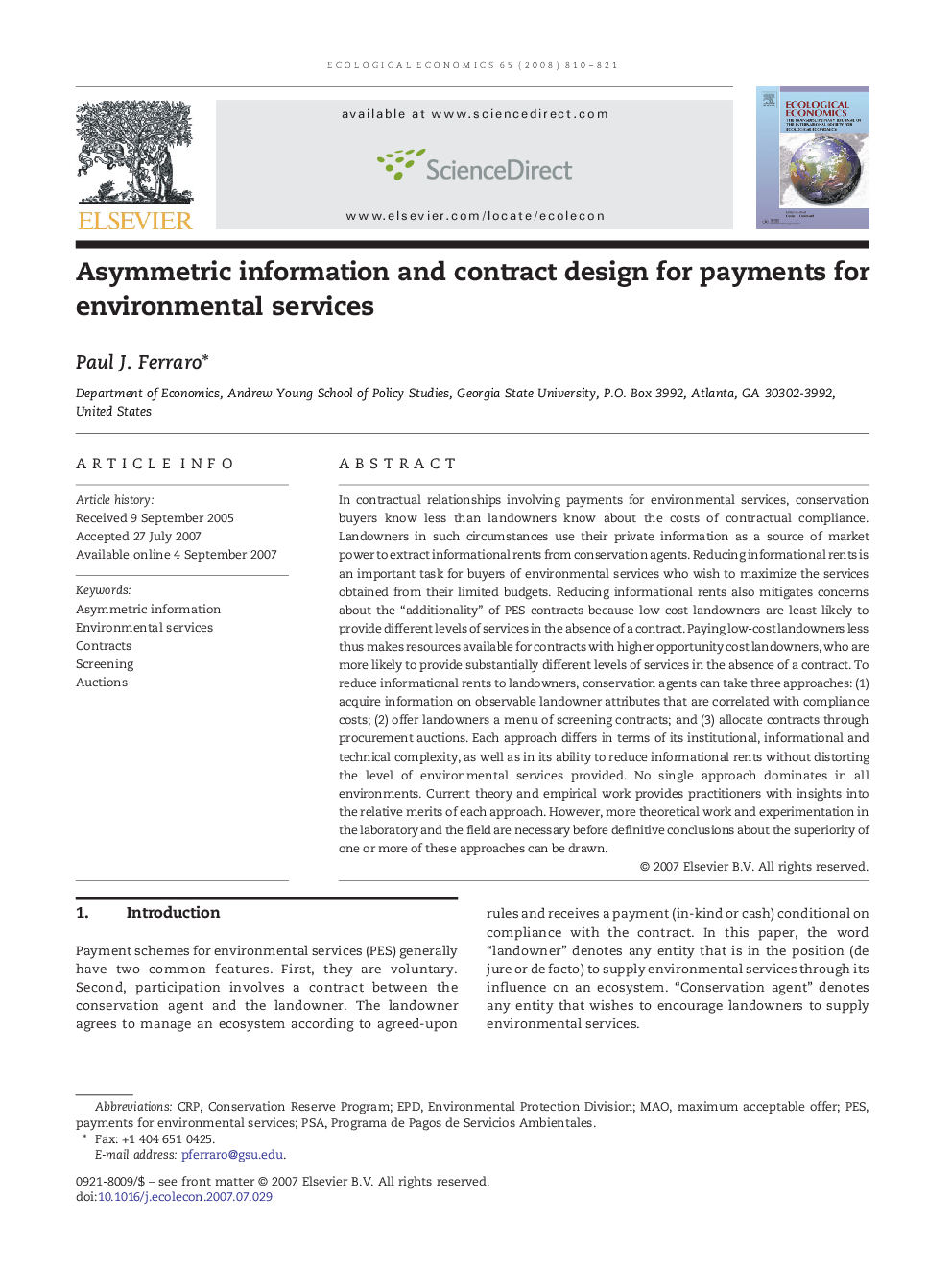ترجمه فارسی عنوان مقاله
اطلاعات نامتقارن و قرارداد طراحی برای پرداخت برای خدمات زیست محیطی
عنوان انگلیسی
Asymmetric information and contract design for payments for environmental services
| کد مقاله | سال انتشار | تعداد صفحات مقاله انگلیسی |
|---|---|---|
| 50335 | 2008 | 12 صفحه PDF |
منبع

Publisher : Elsevier - Science Direct (الزویر - ساینس دایرکت)
Journal : Ecological Economics, Volume 65, Issue 4, 1 May 2008, Pages 810–821
ترجمه کلمات کلیدی
برنامه رزرو حفاظت - بخش حفاظت از محیط زیست - MAO - حداکثر پیشنهاد قابل قبول - پرداخت برای خدمات زیست محیطی - خدمات محیطی - قرارداد - غربالگری - مزایده
کلمات کلیدی انگلیسی
CRP, Conservation Reserve Program; EPD, Environmental Protection Division; MAO, maximum acceptable offer; PES, payments for environmental services; PSA, Programa de Pagos de Servicios AmbientalesAsymmetric information; Environmental services; Contracts; Screening; Auctions

